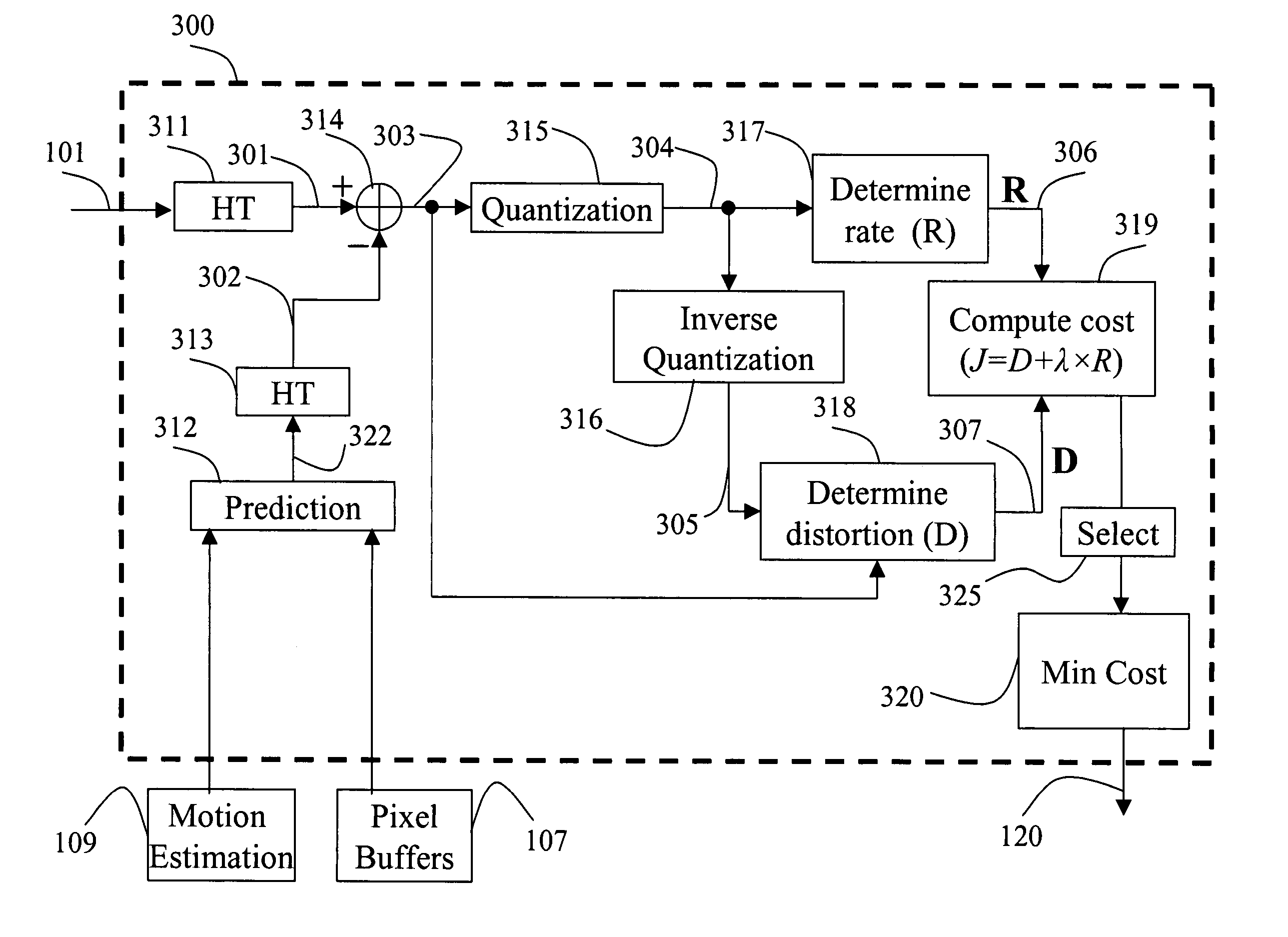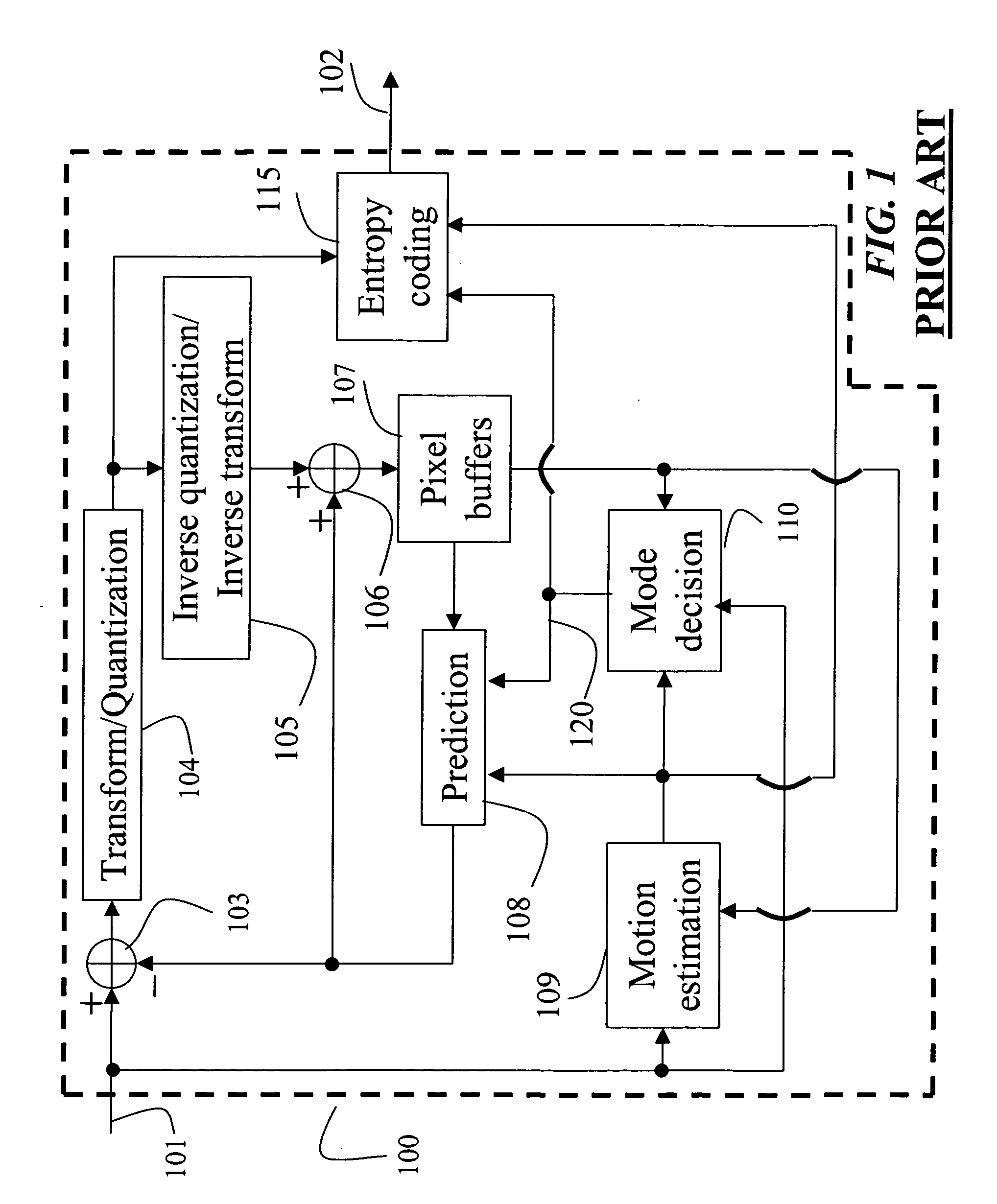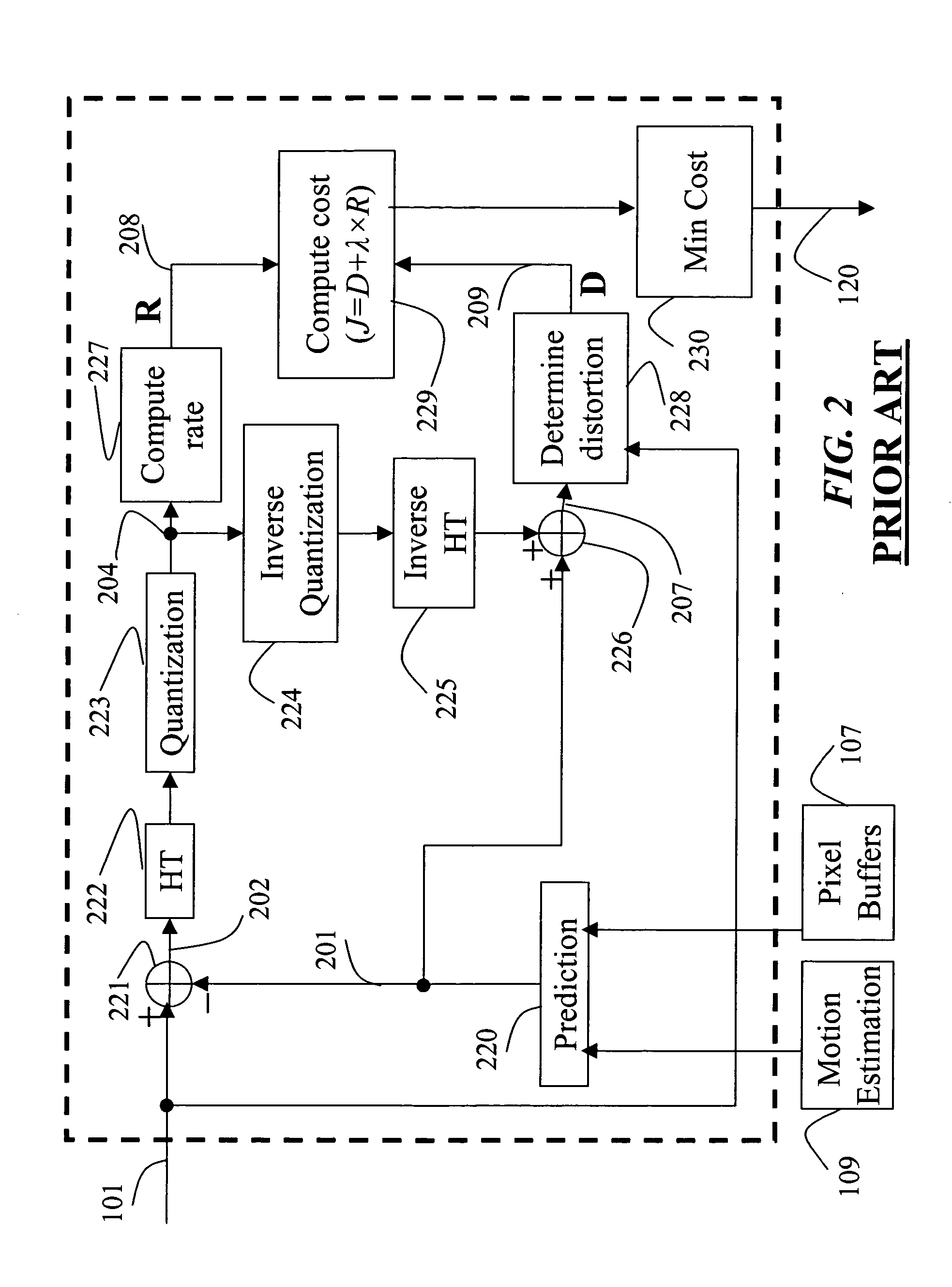Selecting macroblock coding modes for video encoding
a coding mode and macroblock technology, applied in the field of video coding, can solve the problem of very intensive computation of the rate-distortion optimized coding mode decision
- Summary
- Abstract
- Description
- Claims
- Application Information
AI Technical Summary
Benefits of technology
Problems solved by technology
Method used
Image
Examples
Embodiment Construction
[0030] Our invention provides a method for determining a Lagrange cost, which leads to an efficient, rate-distortion optimized macroblock mode decision.
[0031] Method and System Overview
[0032]FIG. 3 shows the method and system 300, according to the invention, for selecting an optimal coding mode from multiple available candidate coding modes for each macroblock in a video. The selection is based on a Lagrange cost for a coding mode of a macroblock partition.
[0033] Both an input macroblock partition 101 and a predicted 312 macroblock partition prediction 322 are subject to HT-transforms 311 and 313, respectively. Each transform produces respective input 301 and predicted 302 HT-coefficients. Then, a difference 303 between the input HT-coefficient 301 and predicted HT-coefficient 302 is determined 314. The difference 303 is quantized 315 to produce a quantized difference 304 from which a coding rate R 306 is determined 317.
[0034] The quantized difference HT-coefficients are also su...
PUM
 Login to View More
Login to View More Abstract
Description
Claims
Application Information
 Login to View More
Login to View More - R&D
- Intellectual Property
- Life Sciences
- Materials
- Tech Scout
- Unparalleled Data Quality
- Higher Quality Content
- 60% Fewer Hallucinations
Browse by: Latest US Patents, China's latest patents, Technical Efficacy Thesaurus, Application Domain, Technology Topic, Popular Technical Reports.
© 2025 PatSnap. All rights reserved.Legal|Privacy policy|Modern Slavery Act Transparency Statement|Sitemap|About US| Contact US: help@patsnap.com



